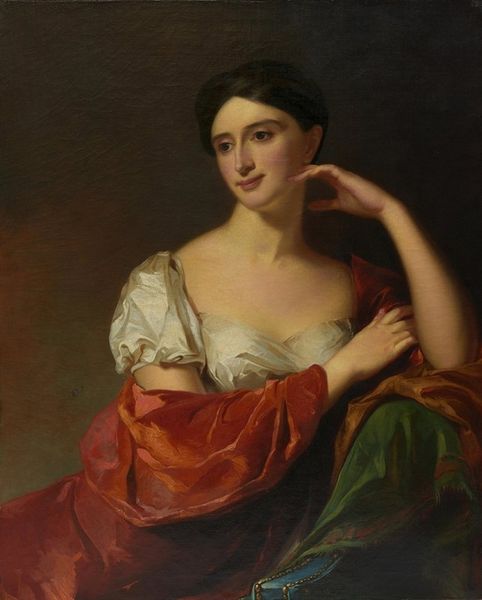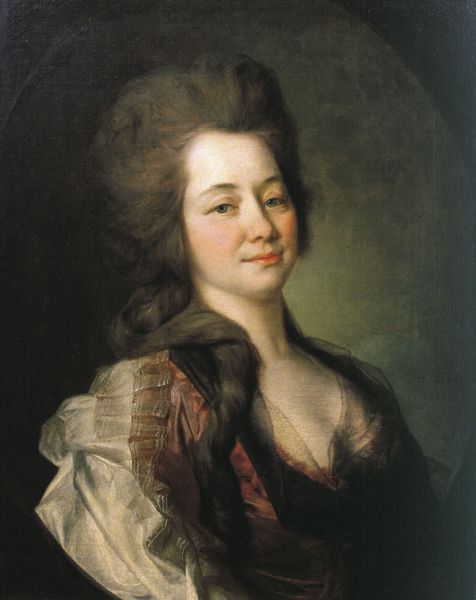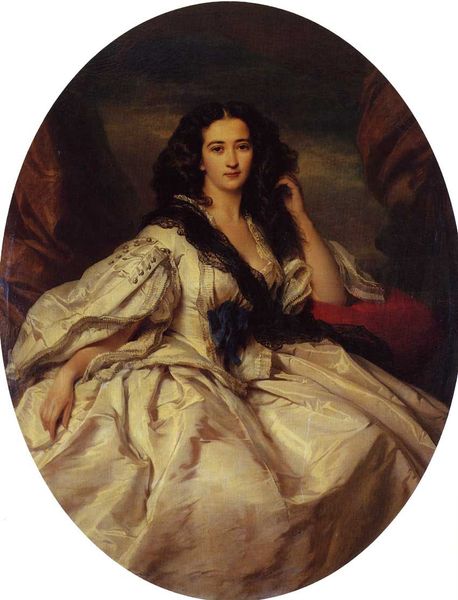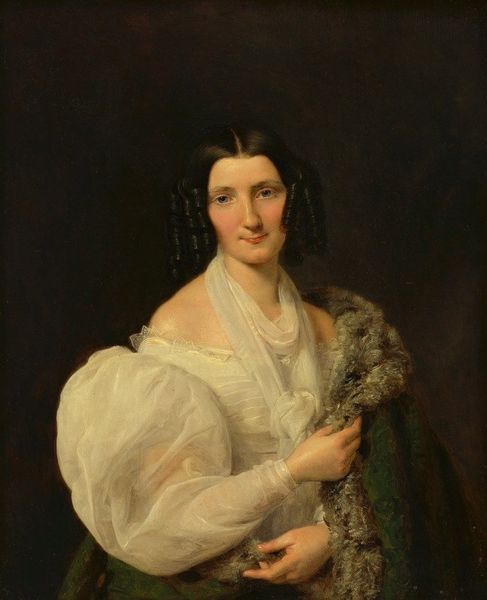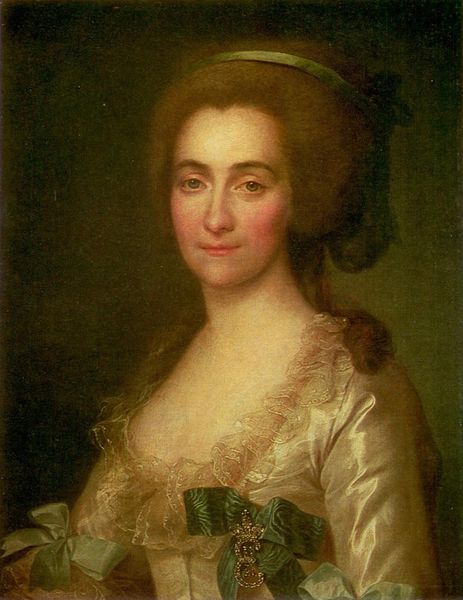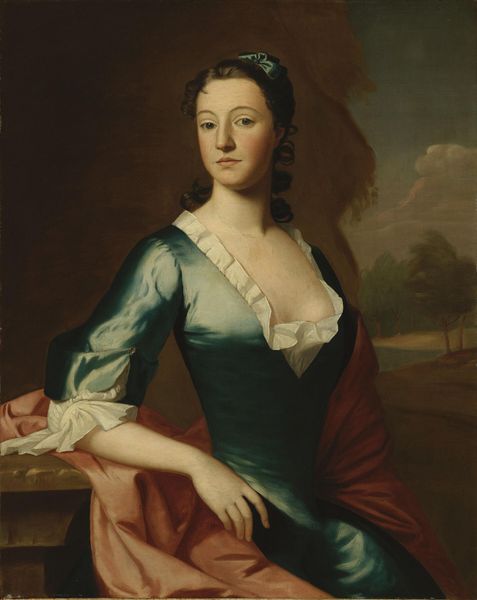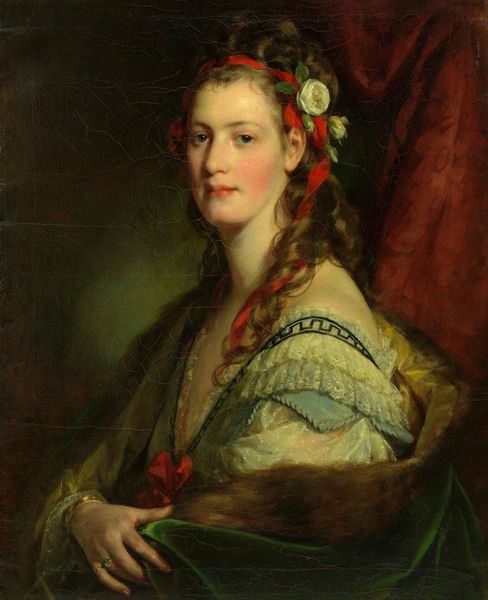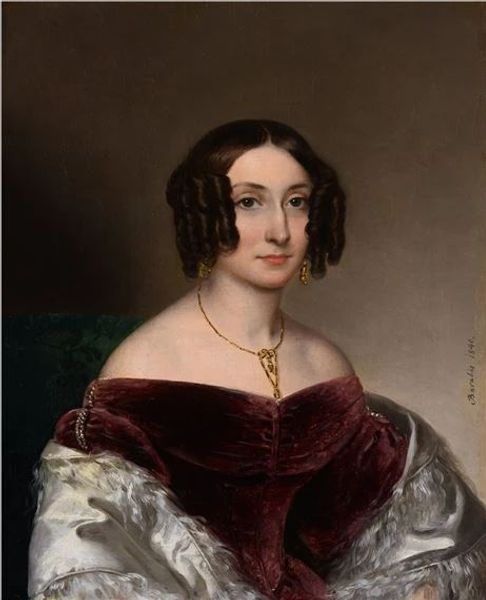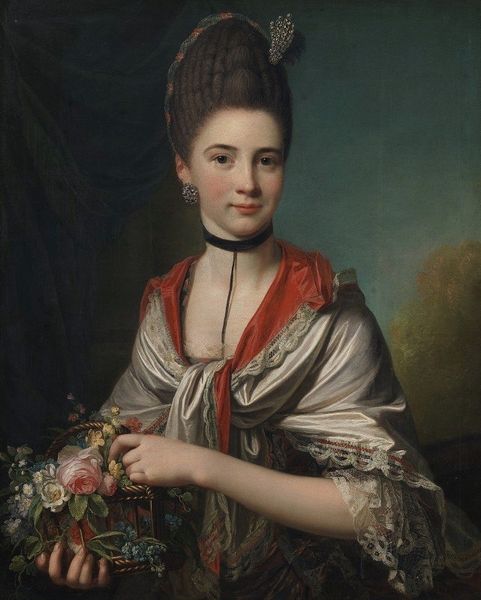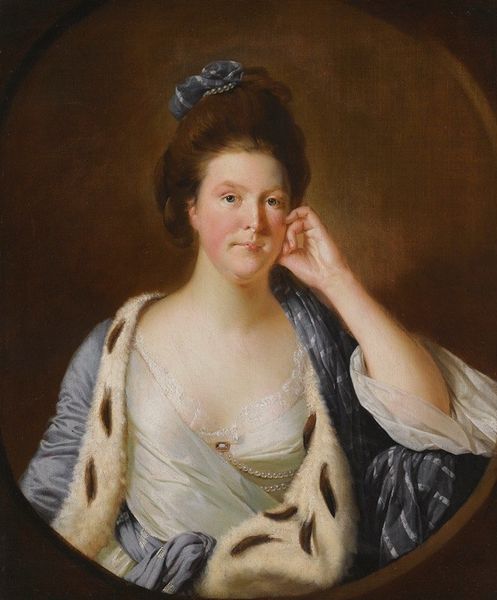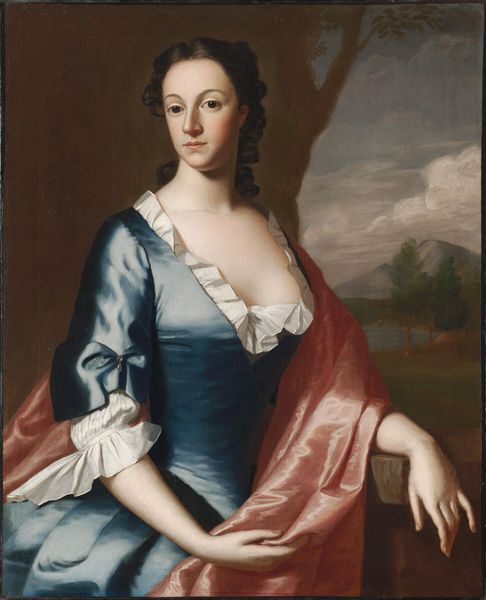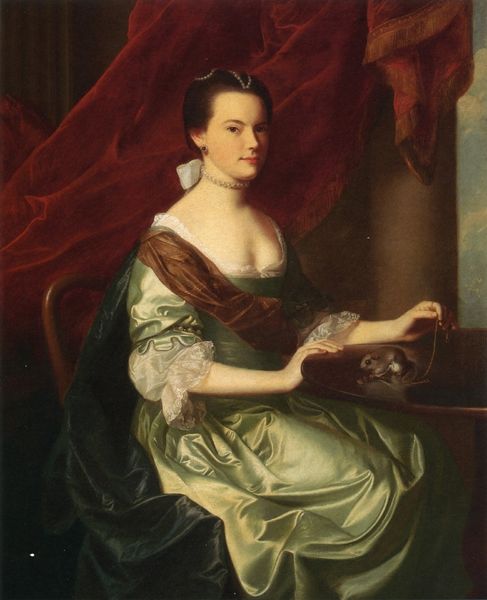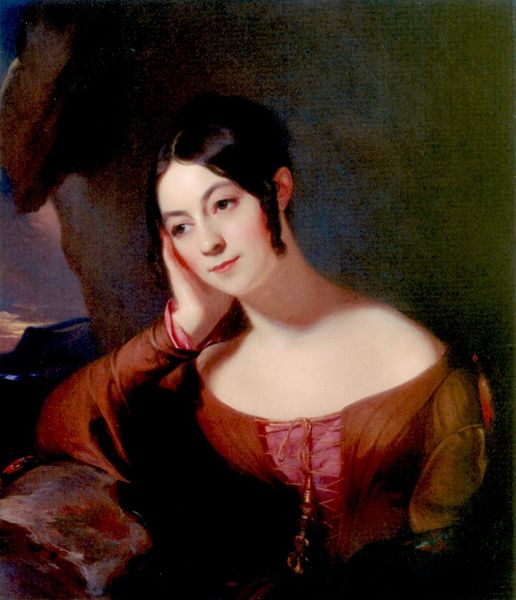
painting, oil-paint
#
portrait
#
painting
#
oil-paint
#
romanticism
#
genre-painting
#
academic-art
Copyright: Public domain
Curator: Up next, we have a portrait titled "Elizabeth Wharton (Mrs. William J. McCluney)," attributed to Thomas Sully, celebrated for his contributions to Romanticism and Academic art. Sully was active in the late 18th and early 19th centuries. Editor: What strikes me first is how ethereal she appears—like a character stepping out of a novel, maybe one where secrets are whispered in gardens overlooking distant, melancholic waters. The way she holds her hand to her chest seems so… earnest. Curator: Absolutely. Considering its genre painting influences, the portrait offers a glimpse into the societal expectations and gendered roles assigned to women of that era. The emphasis is placed on poise, grace, and inner emotion, perhaps at the expense of individuality. Editor: But there’s defiance in her eyes, wouldn’t you say? That tilt of the head—she seems both aware of and slightly amused by the role she is playing. And the romantic backdrop with that giant vase could also imply how women in paintings at the time were considered decorative and ornamental. Curator: Indeed. Her engagement with the book also invites reflection on the importance of education and literacy for women, even within restrictive social parameters. Sully positions Wharton not merely as a beautiful subject, but perhaps a thinking, feeling person. Editor: Well, and speaking of "subjects," what's up with that heavy draping? It swallows her! The fabric and that setting almost feel as if they could crush the subject like the weight of societal expectations back then. But there's still an element of strength, an element of humanity too. Curator: These nuanced interpretations contribute to a richer appreciation of art's complexities, prompting us to challenge normative ideas around beauty, power, and representation, especially within 19th-century portraiture and romantic traditions. Editor: Definitely—it makes me think of all those unnamed muses whose stories remain untold… This artwork sparks a lot of interesting questions and feelings about the women whose portraits exist now.
Comments
No comments
Be the first to comment and join the conversation on the ultimate creative platform.

